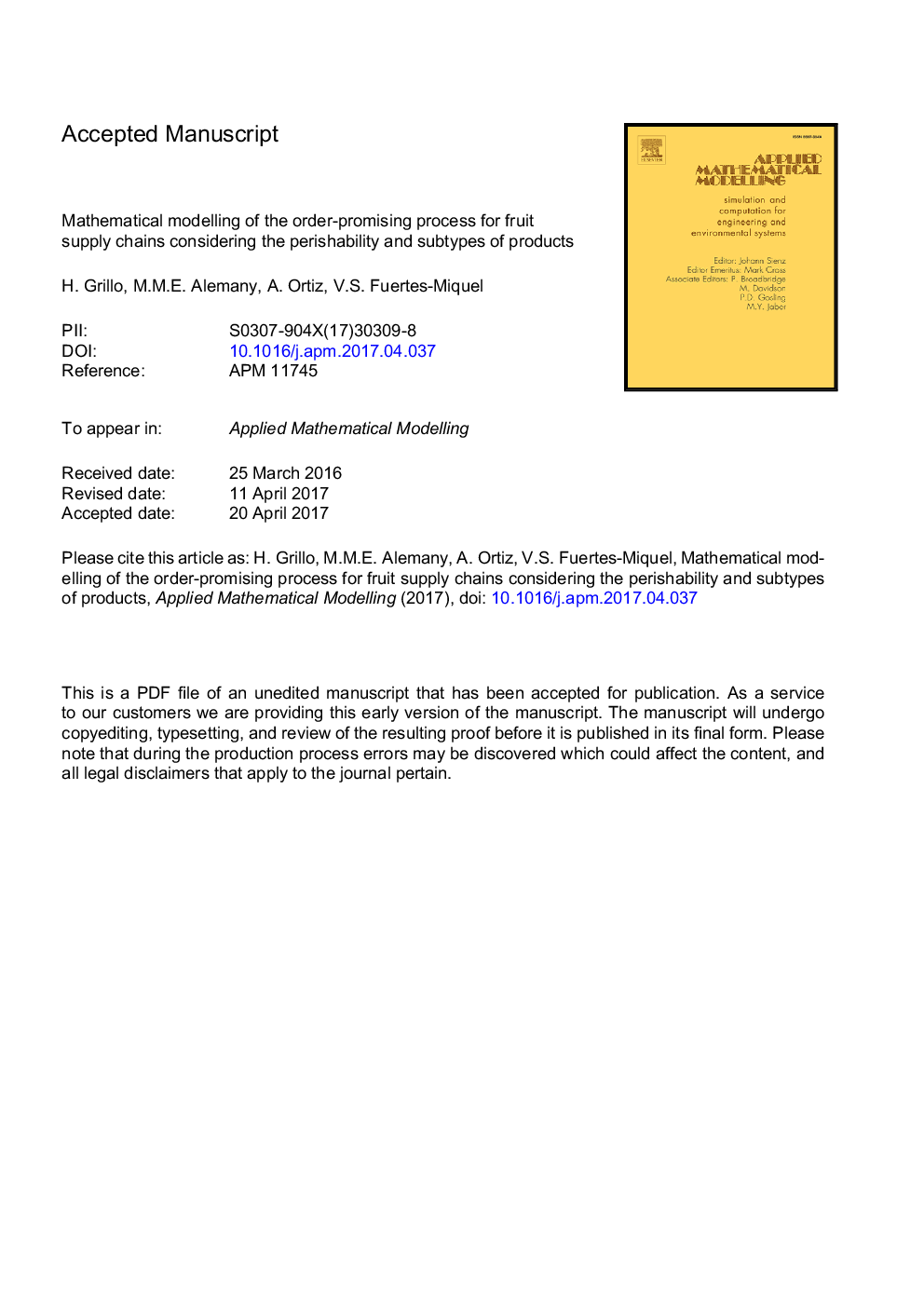| Article ID | Journal | Published Year | Pages | File Type |
|---|---|---|---|---|
| 5471093 | Applied Mathematical Modelling | 2017 | 45 Pages |
Abstract
This paper proposes a mixed integer mathematical programming model to support the complex order promising process in fruit supply chains. Due to natural factors, such as land, weather or harvesting time, these supply chains present units of the same product that differ in certain relevant attributes to customers (subtypes). This becomes a managerial problem when customers require specific subtypes in their orders. Additionally, the deterioration of the original characteristics of subtypes over time generates waste and gives rise to a shelf life-based pricing policy. Therefore, the developed model should ensure that customers are served not only the quantities and dates, but also the required homogeneity and freshness. The model aims to maximise two conflicting objectives: total profit and mean product freshness. The novelty of the model derives from considering both homogeneity in subtypes as a requirement in customer orders and the traceability of product deterioration over time. Different scenarios are defined according to the weight assigned to each objective, shelf-life length and pricing policy in a rolling horizon scheme. The numerical experiments conducted for a real orange and tangerine supply chain, show the model's validity and the conflicting behaviour of the two objectives. The highest profit is made at the expense of the lowest mean freshness delivered, which is reinforced by the narrower the price variation with freshness. Finally, the positive impact of prolonging the product's shelf life on both objectives is shown.
Related Topics
Physical Sciences and Engineering
Engineering
Computational Mechanics
Authors
H. Grillo, M.M.E. Alemany, A. Ortiz, V.S. Fuertes-Miquel,
